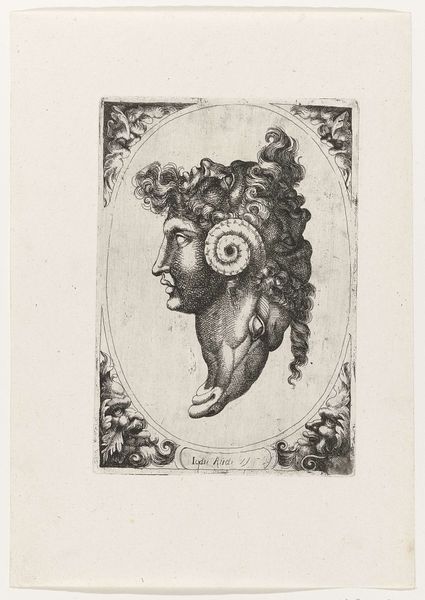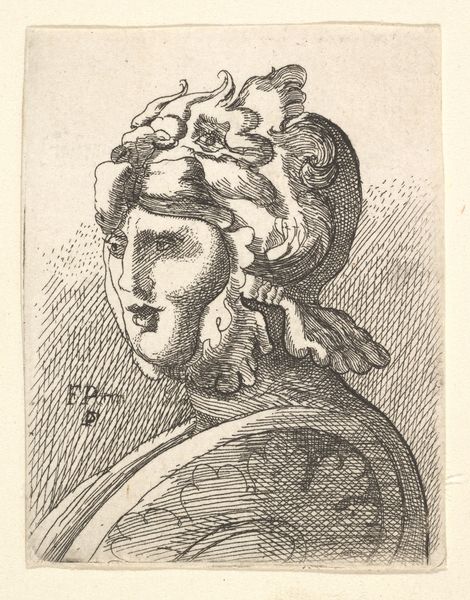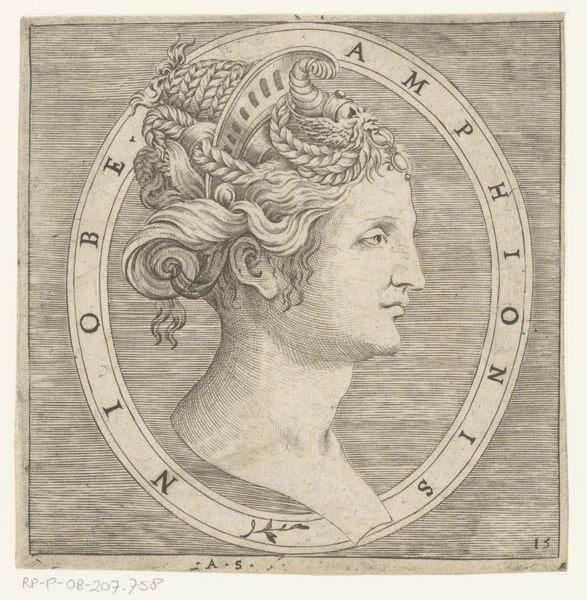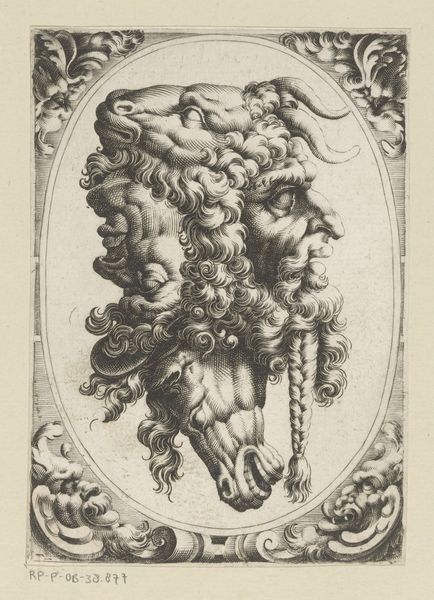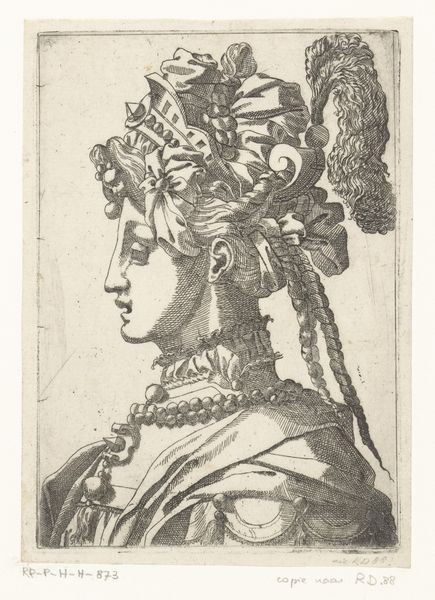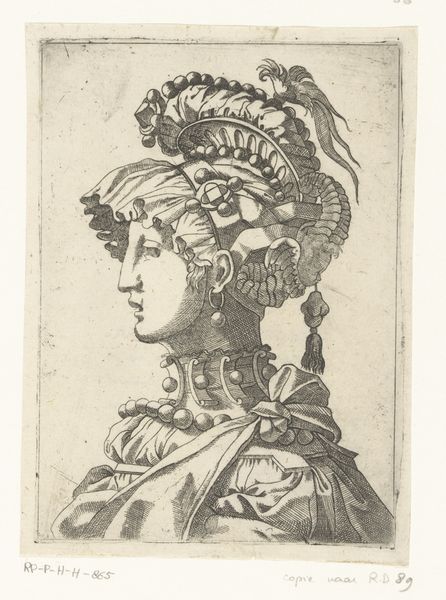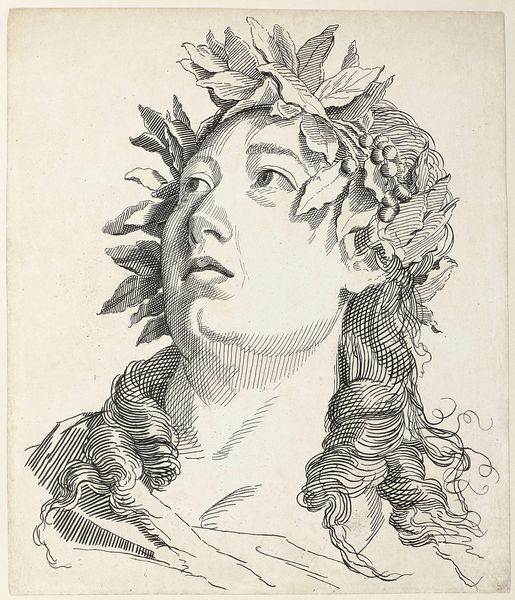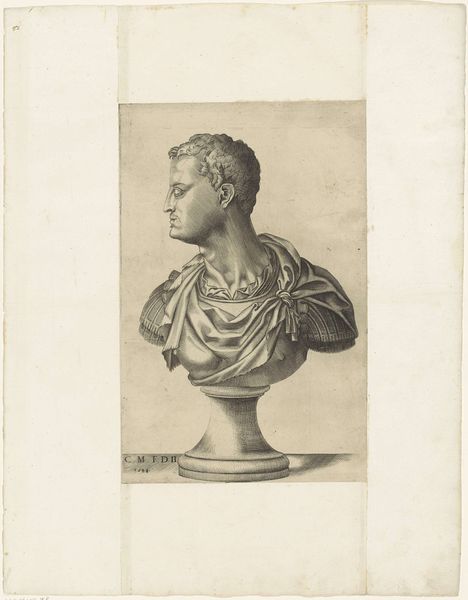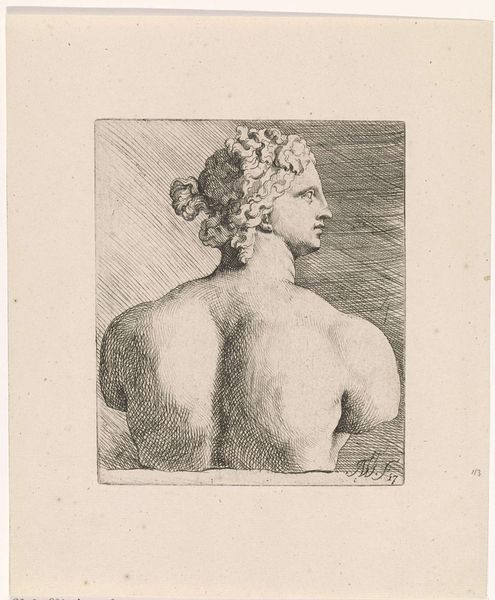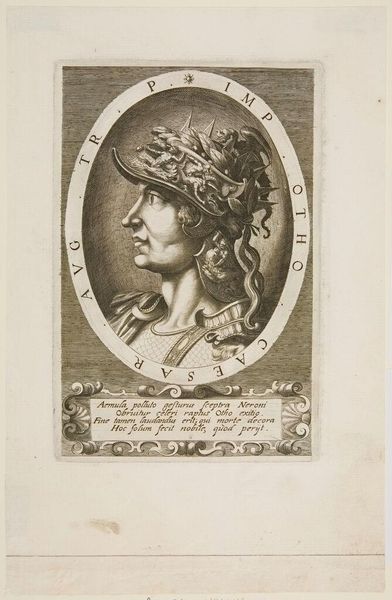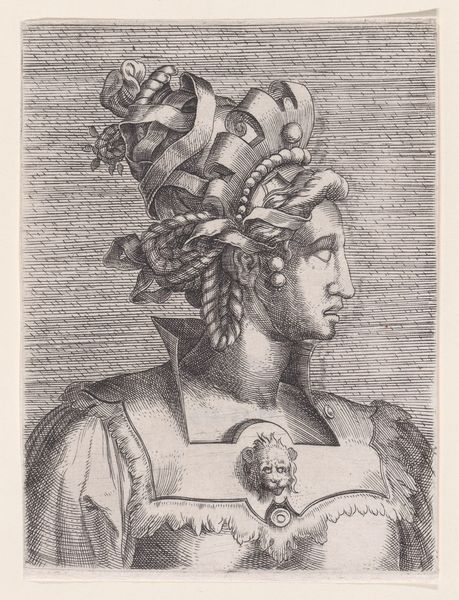
engraving
#
portrait
#
face
#
old engraving style
#
caricature
#
mannerism
#
figuration
#
11_renaissance
#
portrait drawing
#
history-painting
#
engraving
Dimensions: height 153 mm, width 106 mm
Copyright: Rijks Museum: Open Domain
Editor: Here we have "Samenstelling van drie gezichten en de kop van een ram," or "Composition of Three Faces and a Ram's Head," an engraving from between 1590 and 1660, housed here at the Rijksmuseum. It's…unusual, almost grotesque in its construction of faces and animal parts. What is your take on this piece? Curator: The appeal lies in its production. As an engraving, this work is part of a print culture. What material processes shaped its accessibility, and who was its target audience? We should investigate the economic structure of artistic dissemination during this period. Consider the engraver’s workshop – the labour involved. Was it a single artist, or a collaborative process, and how does that influence the artwork’s status? Editor: So you’re less focused on the aesthetics and more on the socio-economic conditions that produced it? Curator: Precisely! Think about the availability of copper plates, the skills of the engraver – these weren't simply artistic decisions, they were constrained and enabled by material realities. The very lines on the page are a product of tools, skill, and a system of production. Also, does the grotesque imagery comment on societal values or consumption habits? Is there a material or resource that the ram's head represents and could be associated to luxury, trade or industry? Editor: That's a really different way to look at it! It makes me think about the original purpose of this print – was it meant to be satirical, or simply decorative, and for whom? Curator: Exactly! These questions push us beyond simply admiring its lines. They force us to confront the messy, material conditions from which all art emerges. Editor: This has completely shifted my perspective on how to analyze art. Curator: Good! Because without an understanding of production, consumption and labour we only get half the picture.
Comments
No comments
Be the first to comment and join the conversation on the ultimate creative platform.

